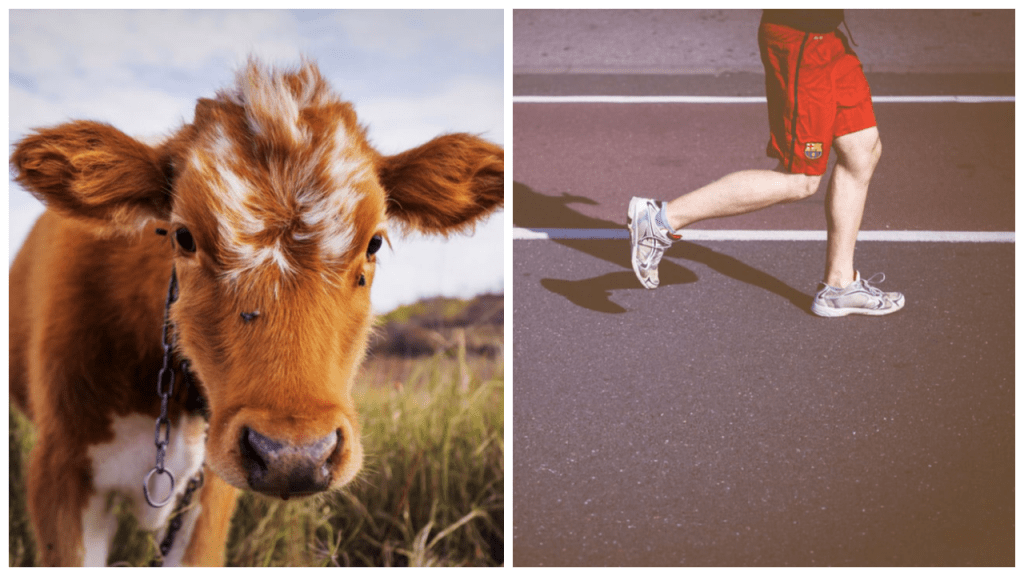What Makes Up Your Calf Muscle
Today’s blog is going back to one of my Facebook live posts about muscles in the lower leg. There are a number of muscles below the knee but this post will be dedicated to two in particular, the gastrocnemius and the soleus, otherwise known as the “Calf Complex.” These two muscles are close to my heart because I injured them a couple of years ago. They gave me a run for my money and from that point on, I was a therapist on a mission. Now I can share some personal insights as well as some knowledge bits. It will make a nice transition into rehab-specific info for lower leg injuries.
Before we delve into the muscles, I want to introduce a topic regarding basic anatomy. It will help understand why we need to talk about those two muscles independently of one another. The topic relates to how many joints a muscle will span. We usually break them down into “single joint muscles” or “two joint muscles.” What this means is that a muscle may only cross or act upon one joint or it can actually cross multiple joints and thus have a very different mechanical action. This is important in not only diagnosing but also rehabbing and performing as well. For example, the glute muscle only crosses the hip joint and thus really only affects the hip into certain motions. The biceps brachii and biceps femoris, or arm muscle and hamstrings respectively, are both two joint muscles because they attach across the elbow and shoulder, and the hamstrings cross the hip and the knee joint as well. Mechanically it helps us as allied health professionals to treat more efficiently.
So now for the calf. If you want to listen to my Facebook live post first or after, please do. It may help, or it might not in which case I apologize! We’ll start from the outside and work our way in. The gastrocnemius or “gastroc” for short is the more superficial muscle whose belly or bulk rests at the top of the calf just below the knee. It is what most people see when people look at a calf. It has two heads, which is why sometimes you can notice a slight delineation when looking at that muscle from the back. The gastroc is a two joint muscle because it crosses both the ankle and the knee joint in the back of the lower leg. Therefore, it is most active with a certain combination of those joint positions. More specifically it is most powerful when your toes are pointed with your knee straight. This is why it is very active in power movements such as sprinting and jumping. “Tennis leg” is a term that was coined after a gastroc injury because of the specific and repetitive quick bursts and lateral movements that require the toes pointed and knee straightened. Conversely, if you bend your knee and point your toes you are actually shortening it across both joints and putting it on slack, and essentially taking it out of the equation. This motion allows you to somewhat isolate the soleus muscle. The gastroc will be treated differently than its shorter counterpart.
Which brings me to the soleus muscle. This is the muscle that is deep to the gastroc or underneath it. And you might have guessed, but this is our “one joint muscle” for today’s read. This muscle only crosses the ankle joint in the back, it does not affect the knee. This muscle sits a bit lower than the gastroc so sometimes you can see it outlined closer to the bottom of the calf complex. It is a muscle that has a good amount of endurance because it is always active when moving because the toes will almost always be pointed down or pushed into the ground as we propel forward with a walk or a run. Unlike the gastroc,if you bend your knee and point your toes you will still activate the soleus muscle because it doesn’t cross the knee joint. So this muscle will be working through any degree of knee position as long as the toes are pointed.
I think that’s pretty good for now. This brief rundown will lead us into part two which will cover more exercise specifics for each muscle and how we use them. We will have videos to accompany this blog series. As always, if you have any questions please don’t hesitate to give us a shout! Happy Training!
